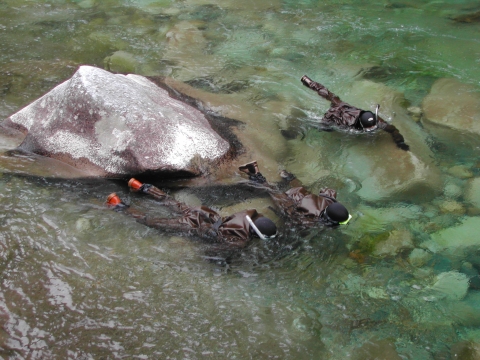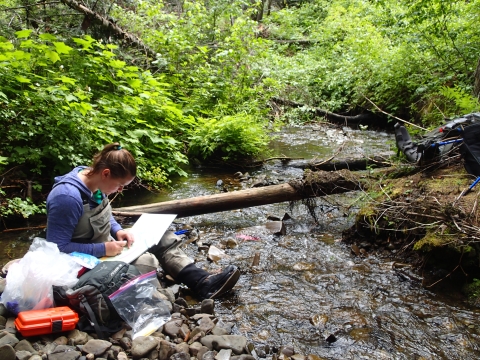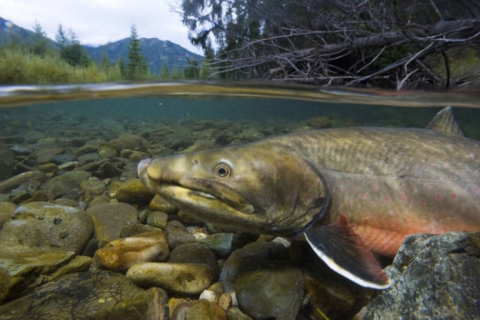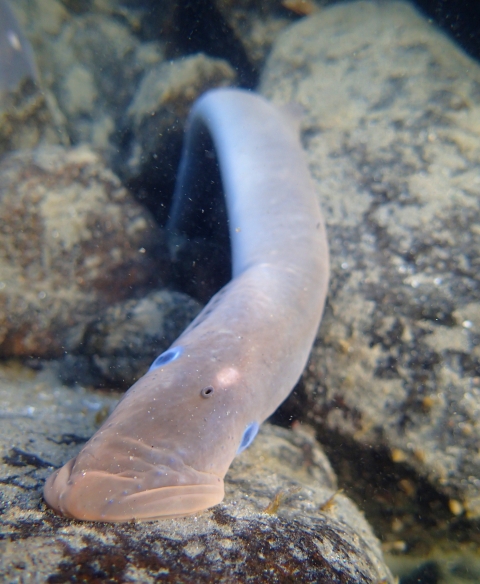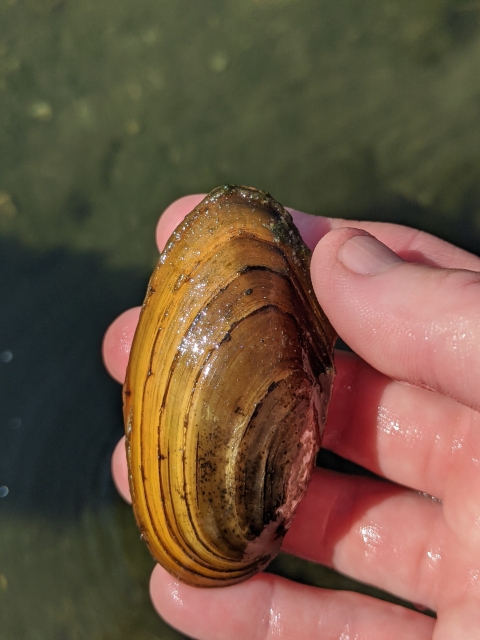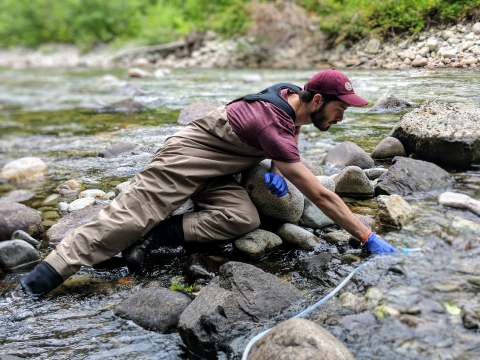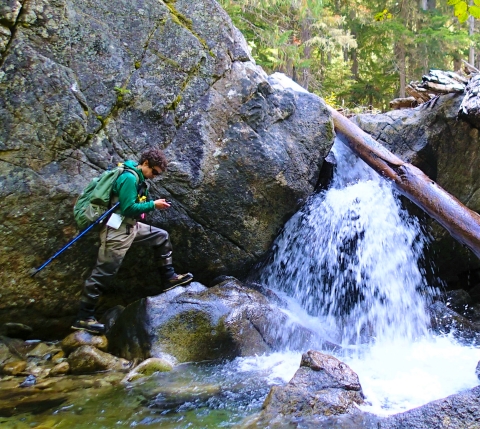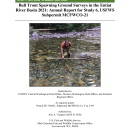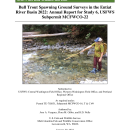We monitor bull trout, Pacific lamprey, steelhead, and Pacific salmon to evaluate the status of populations and assist with conservation efforts.
The mission of the Native Fish Conservation Program is working with others to collect, evaluate, coordinate, and disseminate fisheries information to help conserve native aquatic species and provide science-based management of aquatic resources within the mid-Columbia River region.
What we do
We assist with the development and implementation of native fish conservation and restoration plans. Our biologists and technicians use several methods to monitor and evaluate population status, trends, survival, productivity, distribution, and life history characteristics of native aquatic species with an emphasis on bull trout, Pacific lamprey, and other understudied local fish and macroinvertebrates.
Bull trout
Bull trout are a threatened species and are particularly vulnerable to climate change climate change
Climate change includes both global warming driven by human-induced emissions of greenhouse gases and the resulting large-scale shifts in weather patterns. Though there have been previous periods of climatic change, since the mid-20th century humans have had an unprecedented impact on Earth's climate system and caused change on a global scale.
Learn more about climate change , habitat degradation, non-native species competition, and habitat fragmentation. We monitor the distribution and status of local bull trout populations in order to assess and effectively manage threats and to aid recovery of this species. Techniques we commonly employ to study regional bull trout populations include watershed-scale environmental DNA analysis, night snorkeling capture surveys, and backcountry redd surveys.
Pacific lamprey
Pacific lamprey are one of the oldest fish species alive today, but their populations are declining due to the damming of rivers and habitat degradation. We evaluate the distribution and migratory behavior of Pacific lamprey in order to better understand their life history and help identify threats to their persistence. Our recent Pacific lamprey research has included raft-based nest surveys, electrofishing surveys, and environmental DNA analysis.
Native freshwater mussels, Redband Trout, Cutthroat Trout, Mountain Whitefish
Many of our native aquatic species are vulnerable to a variety of threats that impact our local freshwater systems. We work to conserve and monitor many native aquatic species found in the rivers and lakes on the east side of the Cascade Mountains. We are currently using environmental DNA analysis to better understand the distributions of several understudied local aquatic species.

